When it comes to selling your car, you want to get the highest resale value possible. Learn How PPF Can Increase the Resale Value of Your Car. One way to achieve this is by investing in clear bra paint protection film. This simple and affordable solution can not only protect your car’s paint from damage but it can also increase its resale value.
Your car’s exterior is constantly exposed to elements that can cause damage to its paint, such as UV rays, road debris, and bird droppings. Paint protection film acts as a shield, preventing these damages and keeping your car looking brand new.
In this blog post, we will explore how paint protection film can increase your car’s resale value and why it is a worthwhile investment for any car owner. From preserving the paint’s quality to attracting potential buyers, you’ll discover the many benefits of this protective solution.
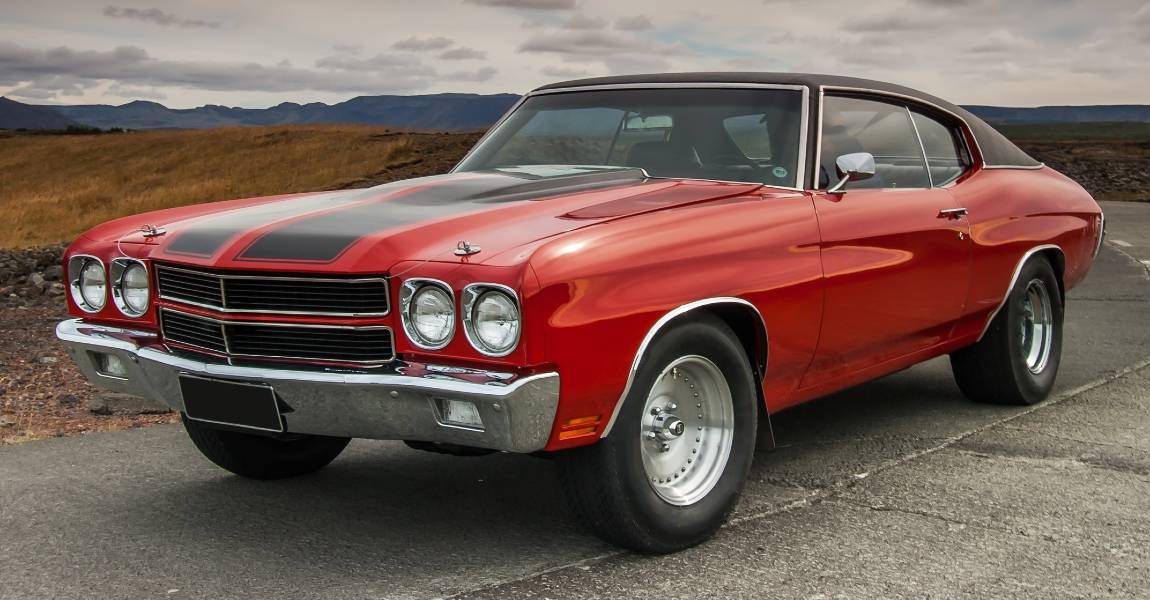
Table of Contents
What is a PPF (Paint Protection Film) for Cars?
PPF, or Paint Protection Film, is a transparent, self-healing film applied to a vehicle’s exterior to protect the paint from various types of damage.
It is a barrier against:
- rock chips
- tree sap
- swirl marks
- minor scratches
- road debris
- road salt
- provides protection against paint fading
The film is designed to absorb the impact of these elements, preventing them from directly damaging the vehicle’s paint surface.
By applying PPF, car owners can maintain the pristine appearance of their vehicles and extend their lifespan by minimizing the risk of paint damage.
What are the Benefits of Paint Protection Film for Resale Value?
Paint Protection Film (PPF) is a transparent film applied to the exterior surfaces of vehicles to protect the paintwork from damage and preserve its resale value.
Here are the benefits of using PPF:
- UV Protection: PPF provides a layer of protection against the sun’s harmful ultraviolet (UV) rays. UV rays can cause the paint to fade and deteriorate over time, decreasing the vehicle’s resale value. PPF helps prevent this damage, keeping the paint job vibrant and new.
- Harsh Weather Conditions: PPF acts as a barrier against harsh weather conditions such as rain, snow, and hail. These elements can cause the paint to chip, scratch, or corrode, decreasing the vehicle’s resale value. PPF provides an extra layer of defense, ensuring that the paint remains intact and protected.
- Excellent Investment: Applying PPF to a vehicle is considered an excellent investment. It helps to maintain the vehicle’s pristine appearance, which is a major benefit in determining its resale value. Potential buyers are willing to pay more for a car that has been well-maintained and protected with PPF.
- Protection Against Chips and External Damage: PPF offers superior protection against chips, scratches, and other external damage caused by road debris, stones, and gravel. These types of damages can significantly impact the appearance and value of a vehicle. PPF acts as a protective layer, absorbing the impact and preventing the paint from being damaged.
- Superior Protection: PPF provides a high level of protection that surpasses traditional methods such as waxing or polishing. It forms a strong, durable protective barrier resistant to abrasions and chemical stains. This superior protection ensures that the paint remains in pristine condition, maintaining the vehicle’s resale value.
In summary, Paint Protection Film (PPF) offers several benefits for a vehicle’s resale value. It provides UV protection, safeguards against harsh weather conditions, is an excellent investment, offers protection against chips and external damage, and provides superior overall protection for the paintwork. By applying PPF, vehicle owners can maintain the appearance and condition of their vehicles, ensuring that they retain their value when it comes time to sell or trade them in.
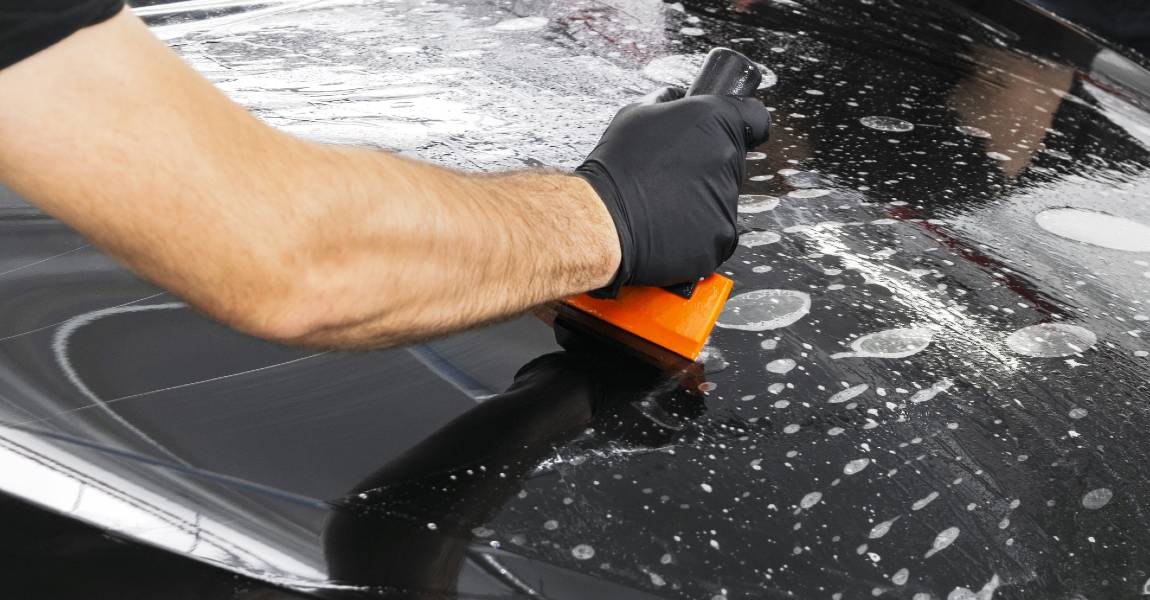
What are the Different Types of Paint Protection Films?
There are several different types of paint protection films available in the market today that offer varying levels of protection for vehicle surfaces. These films are designed to shield the paint from scratches, rock chips, and other forms of damage.
Here are some of the different types of paint protection films:
Clear Paint Protection Film
This is the most common type of paint protection film. It is a transparent film that is applied to the vehicle’s painted surfaces, providing a layer of protection without altering the appearance of the paint. Clear paint protection film is often used on high-end vehicles and provides a high level of protection against scratches, UV rays, and other environmental factors.
Matte Finish Paint Protection Film
Matte finish paint protection film is specifically designed for vehicles with matte or satin paint finishes. It offers the same level of protection as clear film but has a matte finish that matches the existing paint, preserving the unique appearance of the vehicle. Matte finish paint protection film is highly recommended for vehicles with non-glossy finishes.
Self-Healing Films
High-quality paint protection films often come with self-healing properties. These films have a special top clear coat that can repair itself from minor scratches and swirl marks. The self-healing properties allow the film to regain its original smooth and glossy appearance over time, ensuring long-lasting protection for the vehicle’s paint.
Vinyl Wrap
Vinyl Wrap PPF, also known as Paint Protection Film, is a type of protective coating applied to the exterior surfaces of vehicles to protect them from scratches, chips, and other forms of damage. It is a clear, self-healing film that provides a layer of protection while maintaining the original appearance of the vehicle.
Hydrophobic Property
Another essential feature of high-quality paint protection films is their hydrophobic property. This means the film has a water-repellent surface, causing water and other liquids to bead up and roll off the film easily. This property helps to prevent water spots and makes the film easier to clean.
Ceramic Coating Paint Protection
Some paint protection films are infused with ceramic coatings, which provide enhanced durability and protection. Ceramic coatings create a strong, transparent layer on top of the film, offering superior resistance to scratches, chemicals, and UV rays. This type of ceramic coatings paint protection film is known for its long-lasting performance and can provide additional gloss and depth to the vehicle’s paint.
In summary, various types of paint protection films are available in the market, including clear film, matte finish film, and films with self-healing properties and ceramic coatings. These films offer different levels of protection and features to suit different vehicle types and paint finishes. When choosing a paint protection film, it is essential to consider factors such as the quality of the film, its hydrophobic properties, and your vehicle’s specific needs.
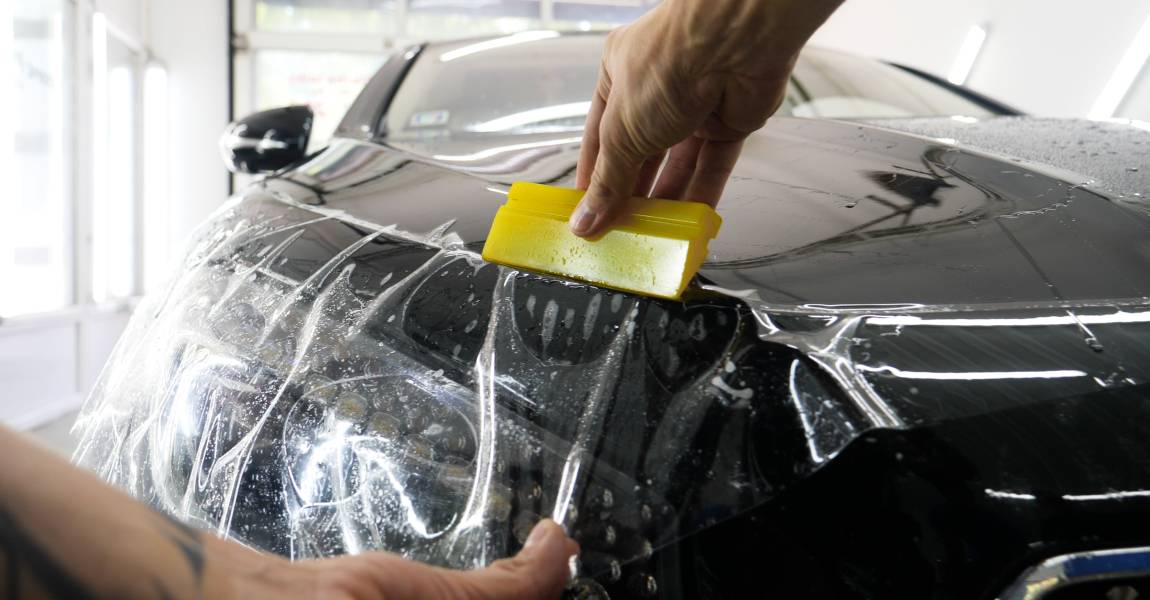
Installation of Paint Protection Films (PPF)
Paint Protection Films (PPF) are popular for vehicle owners who want to protect their car’s paintwork from scratches, chips, and other damage.
Regarding the installation of PPF, there are two options: DIY or professional installers.
Learn More: Does Installing Paint Protection Film Boost Your Car’s Resale Value?
DIY Installation
DIY installation of PPF can be a cost-effective option for those who have some experience with automotive detailing and are confident in their skills. However, it is essential to note that PPF installation requires precision and expertise to ensure a seamless and long-lasting result. If not installed correctly, the film may not adhere properly or develop bubbles and wrinkles over time. Therefore, it is recommended to leave the installation to a professional auto paint protection film installer specializing in paint protection film installation.
Preparing for Installation
Before the installation process, proper preparation is crucial. The vehicle’s surface should be thoroughly cleaned and free from dirt, debris, or contaminants. This can be done by washing the car and using a clay bar to remove any embedded particles. Any paint damage or imperfections should be addressed before applying the film, as PPF is designed to protect the existing paintwork, not hide existing flaws.
Applying the Film Properly
Applying the film properly requires patience and attention to detail. It is essential to follow the manufacturer’s instructions and use the recommended tools and techniques. This may include using a spray bottle with a mixture of water and soap to aid in the positioning and sliding of the film. The film should be carefully laid onto the surface, ensuring it is aligned and centered correctly. Once in position, a squeegee or a similar tool should be used to remove any air bubbles and ensure a smooth and tight fit.
Trimming and Sealing Techniques
Trimming and sealing techniques are also essential to achieve a seamless and professional-looking installation. The excess film should be carefully cut using a sharp knife or blade, following the contours and edges of the vehicle. Proper sealing of the edges is essential to prevent moisture and dirt from getting underneath the film. This can be done by using a heat gun to heat the film and carefully pressing it onto the surface, creating a secure seal.
What are the Differences in Installation Methods?
Regarding the differences in installation methods, professional installers often have access to specialized tools and equipment, as well as extensive training and experience. They can achieve a higher level of precision and expertise in applying the film, resulting in a superior finish.
DIY installation may save on installation fees, but it carries a higher risk of mistakes and subpar results.
In addition to installation, professional installers may also offer automotive detailing services, including paint repairs and maintenance. They have the knowledge and skills to assess the condition of the vehicle’s paintwork and recommend appropriate treatments to keep it in optimal condition.
External factors such as temperature and humidity can also affect the installation process. Installing PPF in a controlled environment, preferably indoors, is recommended to ensure optimal conditions for adhesion and curing.
In conclusion, while DIY installation of PPF may be an option for those with experience and confidence in their skills, it is generally recommended to leave the installation to professional paint protection film installers or bra installers.
Proper preparation, application, trimming, and sealing techniques are essential for a seamless and long-lasting installation. By choosing professional installers, vehicle owners can ensure a superior finish and peace of mind knowing their car’s paintwork is protected.
What are the Advantages of Ceramic Coatings vs. PPF?
Ceramic coatings and Paint Protection Film (PPF) are popular options for enhancing the protection and maintaining the immaculate condition of a vehicle’s paintwork. However, there are several advantages of ceramic coatings over PPF that make them a worthwhile investment.
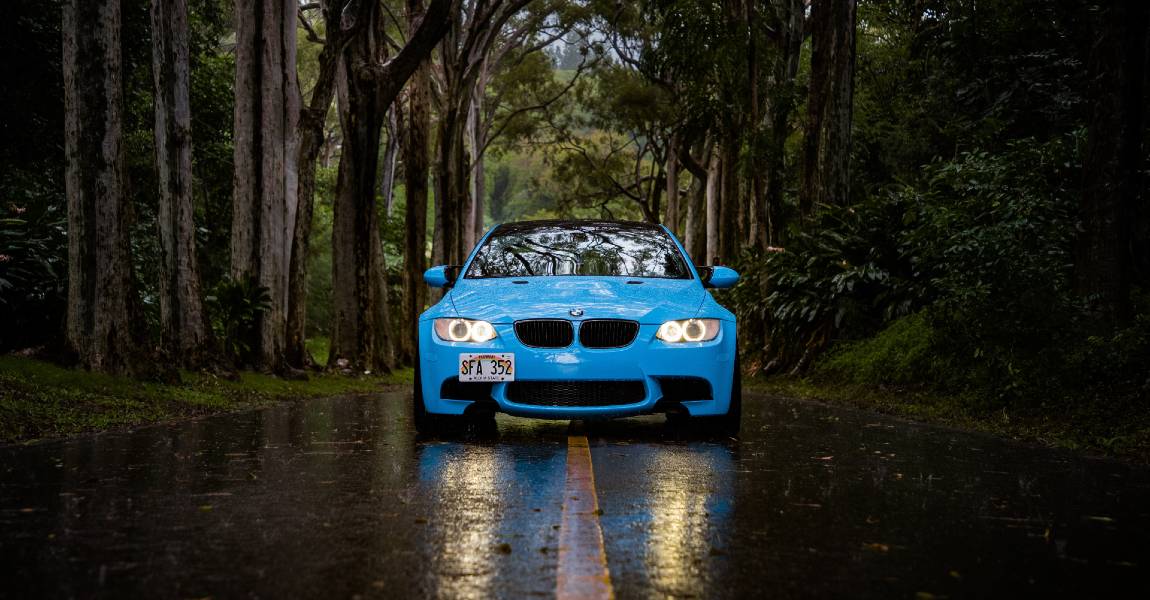
Ceramic Car Coatings
- One of the main advantages of ceramic coatings is their enhanced protection. Ceramic coatings create a permanent or semi-permanent bond with the vehicle’s paint, forming a protective layer that shields it from environmental contaminants such as dirt, dust, UV rays, bird droppings, and even minor scratches. This protective layer acts as a barrier, preventing these contaminants from penetrating the paint and causing damage.
- Another advantage of ceramic coatings is their high-quality film-like finish. Once applied, ceramic coatings create a glossy, hydrophobic surface that repels water, dirt, and other contaminants. This not only makes the vehicle easier to clean but also enhances its overall appearance. The smooth and reflective finish achieved with ceramic coatings gives the vehicle a sleek and polished look, making it stand out on the road.
- Furthermore, ceramic coatings offer numerous benefits in terms of maintenance and durability. Unlike PPF, which requires periodic replacement after a few years, ceramic coatings can last several years with proper care. They are highly resistant to fading, cracking, or peeling, ensuring that the vehicle’s paintwork remains protected and in pristine condition for an extended period.
- Additionally, ceramic coatings are a worthwhile investment due to their cost-effectiveness. While the initial application of a ceramic coating may be more expensive than PPF, the long-term benefits outweigh the cost.
- With a ceramic coating, vehicle owners can save money on regular waxing or polishing, as the coating provides a long-lasting shine and protection. Moreover, the enhanced durability of ceramic coatings reduces the need for frequent repainting or touch-ups, further saving on maintenance costs.
- Ceramic coatings offer numerous advantages over PPF. They provide enhanced protection, create a high-quality film-like finish, offer long-lasting durability, and are a worthwhile investment in terms of cost-effectiveness. With their ability to keep a vehicle’s paintwork in immaculate condition, ceramic coatings are an excellent choice for those looking to protect and enhance the appearance of their vehicles.
PPF for Cars
In contrast, PPF is a high-quality film applied to the vehicle’s paintwork. While it does provide protection against scratches and stone chips, it is not as effective in shielding the paint from other contaminants or UV rays. Ceramic coatings, on the other hand, offer a more comprehensive and long-lasting protection.
Here are some Pros of PPF:
- Provides excellent protection against rock chips, scratches, and other physical damage
- Self-healing properties allow it to repair minor scratches and swirl marks
- Can be easily removed without damaging the original paint
- Offers a clear and invisible layer of protection
- Can be applied to specific areas or the entire vehicle
Cost Comparison Between Protective Coatings and Films
Protective coatings and films are commonly used to protect vehicles’ paintwork from scratches, chips, and other damages. When considering the cost comparison between protective coatings and films, it is vital to take into account the initial cost of application, as well as the long-term maintenance costs.
The cost of paint protection coatings can vary depending on the coating type used and the vehicle’s size. On average, the cost of applying a professional-grade ceramic coating to a standard-sized car can range from $500 to $2,000. This cost includes the labor and materials required for the application process. Ceramic coatings are known for their durability and longevity, often lasting several years with proper maintenance.
On the other hand, paint protection films (PPF) are typically more expensive than coatings.
PPF provides a thicker layer of protection and can be applied to specific areas of the vehicle or the entire vehicle.
The cost of applying PPF can range from $1,000 to $5,000 or more, depending on the vehicle’s size and the installation’s complexity. PPF requires professional installation to ensure a smooth and seamless finish.
Cost of Maintenance
In terms of maintenance costs, both coatings and films require regular cleaning and maintenance to preserve their protective properties. This includes washing the vehicle using non-abrasive products and avoiding harsh chemicals or abrasive materials that can damage the coating or film.
Additionally, periodic reapplication or touch-ups may be necessary to maintain the effectiveness of the protection.
While the initial cost of applying protective coatings and films may seem high, it is essential to consider the long-term benefits they provide.
These protective layers can help preserve the resale value of the vehicle by preventing paint damage and maintaining its overall appearance.
Repairing paint damage can be costly, and by investing in paint protective films or coatings, vehicle owners can potentially save money in the long run.
Ultimately, the cost comparison between protective coatings and films should take into account the specific needs of the vehicle owner, their budget, and their desired level of protection.
It is recommended to consult with professionals in the industry to get accurate cost estimates and understand the benefits and limitations of each option before making a decision.
Potential Buyers and Window Tinting Considerations
- Potential buyers consider the condition and appearance of a car when determining its resale value.
- Window tinting is a consideration for potential buyers because it can enhance the car’s aesthetics and provide added privacy and protection from harmful UV rays.
- By investing in paint protection film, which can be applied to the car’s exterior, potential buyers can see that it has been well-maintained and protected, increasing its resale value.
Conclusion How PPF Can Increase Your Car’s Resale Value
In conclusion, investing in paint protection film can significantly increase your car’s resale value by preserving its exterior paint from scratches, chips, and other damages.
Don’t wait any longer; install PPF today and ensure your car retains its pristine condition, maximizing its value when it’s time to sell. Contact us today for an estimate to install PPF.




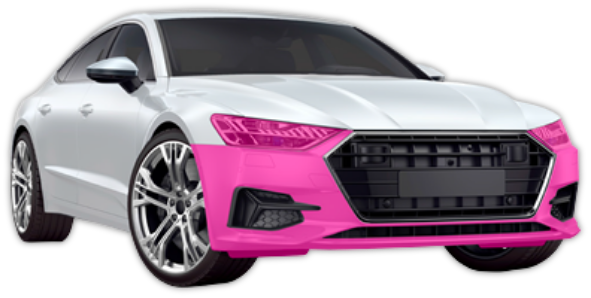
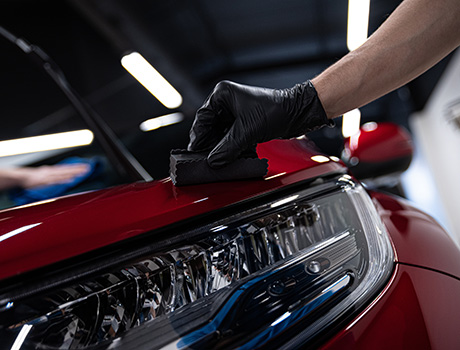
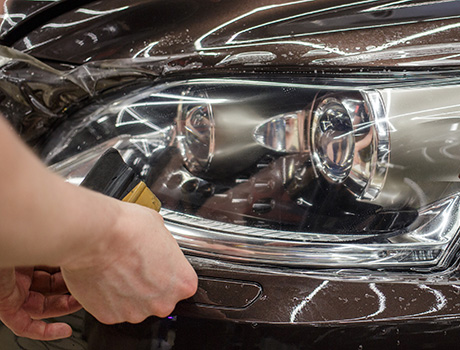

WHAT OUR CLIENTS ARE SAYING